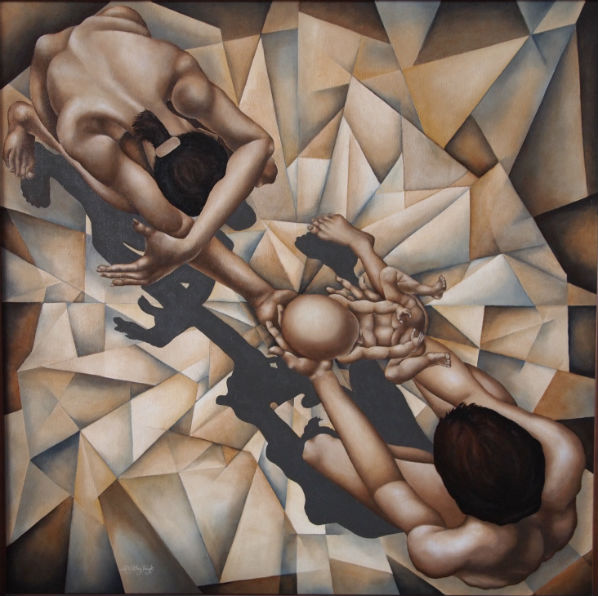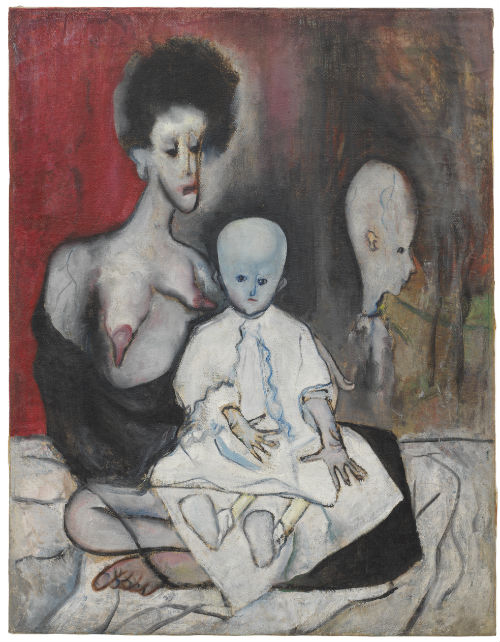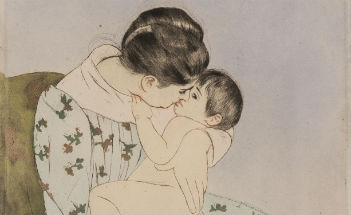
NEW YORK – Motherhood in art is a theme as old as time. From antiquity, religious icons were created to depict saintly images of the Madonna and the Christ Child to romanticized visions among the Impressionists in the 19th century to more modern visions, warts and all.
“There is obviously universal appeal to images of mothers and their children because everyone has a mother and everyone is defined, to a certain degree, with their relationship – or lack thereof – with their mother,” said Virginia Treanor, associate curator at the National Museum of Women in the Arts in Washington, D.C., “The mother as an archetypal figure goes back to images of ancient civilizations like the Egyptian goddesses Isis with her son, Horus. The Christian imagery of Mary and Jesus was inspired, in part, by these earlier images.”

Motherhood has been a theme many artists over the centuries have famously explored, such as Élisabeth Louise Vigée Le Brun’s 1787 Portrait of Marie Antoinette with Her Children seen here; Paul Gaugin’s 1901 portrait, Polynesian Woman with Children here or William-Adolphe Bouguereau’s Innocence.
Most common depictions are mothers with infant children. “They tend to be tender, idealized, and romanticized depictions of new and/or young mothers, such as those found in Mary Cassatt’s images,” she said. Perhaps the bulk of imagery related to mothers, which has largely made up the canon of art history – and widely pursued by art collectors – has been the romanticized version.

“Mary Cassatt is one the most notable artists to explore the theme of maternity,” said William Schweller, fine art specialist at Clarke Auction Gallery in Larchmont, N.Y. “The American Impressionist’s intimate depictions of mothers and their children capture the tenderness and intimacy of 19th century domestic life. Cassatt’s work elevates the role of the mother within the artistic hierarchy of subject matter and celebrates the relationship between mother and child as an essential component of modernity, much as her male Impressionist counterparts chose to depict Parisian street life and café culture.”
Contemporary women artists, however, have been putting a new spin on the motherhood theme. “Renee Cox, Angela Strassheim and Jessica Todd Harper present much more nuanced images of motherhood with images that often have a rawness that captures the physical, mental and emotional consequences of having children,” Treanor said. “There is also a visual tradition of a mother with an adult child – namely, the pietà – which is an image of the Virgin Mary cradling the body of the crucified Christ. Renee Cox used this format to create her iconic image, Yo Mama’s Pieta (1996), part of a series in which she inserts black bodies (including her own) into traditionally white-dominated imagery.”

Greenwich, Conn.-based artist Michele Voigt paints the human experience and most of her paintings are of women and their realities as they relate to the greater human experience, including intimate expressions of motherhood. “For centuries the image of motherhood in art has been dominated by Madonna and Child. I credit Mary Cassatt for turning from the male-dominated pieta-styled images to painting real women as depictions of motherhood capturing the bond forged between mother and child. The image of motherhood in art has continued to evolve.”

Alice Neel’s (1900-1984) unflinching works, mostly nudes, have the power to shock, even today, and they notably upend – and take back – the power of the “male gaze,” as historically it was male artists who painted female nudes. “In Childbirth (1939; pp. 34–35), we see a pregnant woman, nude on a bed. The somber palette of grays and browns that rings her exhausted eyes, her mournful mouth a blur of paint, her contorted physical form, all indicate profound discomfort while simultaneously signaling troubles yet to come,” says Helen Molesworth in her catalog essay for the 2019 exhibition, “Alice Neel Freedom” mounted by the David Zwirner Gallery in New York City. “Painted in the 1930s, decades before reliable, safe and accessible birth control was available to women, the image does not offer motherhood as sentimental or saintly but rather as difficult and potentially deadly.”
As we pay homage to mothers this Mother’s Day weekend, it’s a perfect time to survey the history of motherhood in art in all its forms – from saintly mothers of yesterday to today’s more nuanced images.
# # #



